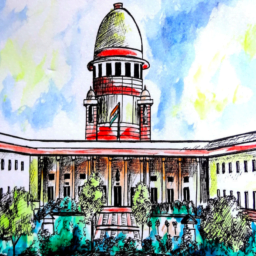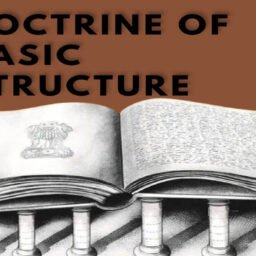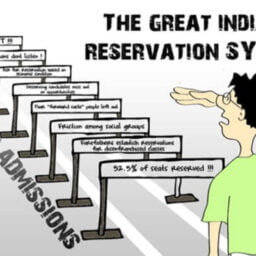“Online learning is not the next big thing; it is the now big thing.”
– Donna J. Abernathy
INTRODUCTION
Online or electronic learning is the procurement of knowledge using electronic technology and media. E-learning is usually carried out over the Internet, where students can access their educational material online at any time. In traditional education, we frequently learn through reading, writing, listening, and completing tasks assigned by lecturers. In traditional education, students are mostly the recipient where they can solve their doubts, confusions at that very time. On the other hand, online learnings are different since the fellow students and the instructor are not at the same place. In online education, the students barely meet their instructor or fellow students in person.
WHAT IS ONLINE EDUCATION/ LEARNING?
E-learning in simple language is defined as “electronically facilitated learning.” Online learning offers several benefits over traditional means of learning. In certain cases, students can take advantage of self-paced learning and pick their own comfortable and peaceful surroundings. Online learning is also cost-effective because it breaks the barrier between classroom education and students. It is expected that by 2025 the revenue generated by online education would reach $ 325 Billion which will be three times greater than current revenue growth i.e., from $ 107 Billion to $ 325 Billion.[1]
Educational Scientists and Researchers from all over the world have given several definitions of online education, some of them are:
Sarah Guri Rosenbilt in her research paper, “Distance Education and’ ‘E Learning’: Not the same thing” defined E-Learning as electronic media used for various learning purposes ranging from conventional add-on functions to online substitution for face-to-face meetings with online encounters, in the year 2005.[2]
In 2006 Ruiz, Mintzer, and Leipzig in their research paper: ‘The impact of E-Learning in Medical education’ defined E-Learning as “using internet technologies for enhancing performance and knowledge’.
HISTORY OF ONLINE EDUCATION
The beginning of online education can be seen in the late 1900s. The first distance learning program practised when U.S postal service was developed in the 19th century with the belief to provide long-lasting, reliable study material between students and professors.
In 1986 internet came to India only for the purpose of education and the researcher’s community. From 15th august 1995, it was made publicly available for the citizen as well.[3] It has been more than 20 years since India is accessing the Internet on the educational platform.
ONLINE EDUCATION IN INDIA
According to the release report of 2021 KPMG India and Google; the market growth of E-Learning in India is expected to grow by eight times in the next three years from USD 247 million in 2016 to USD 1.96 billion in 2021.[4] An increase in online education users from 1.5 million in 2016 to 9.5 million users in 2021 is the main reason behind the huge online education market. But the main concern arises here, there are several nuances of online education about which the huge population is still unaware, some are as follows: Is India ready to adopt online education or classes nationwide? Is online education protecting the shield of Article 21A of the Indian Constitution? Is online education giving a healthy environment to kids?
LITERACY RATE IN INDIA
India is a developing nation; we still do not have adequate resources or equipment when it comes to digitalizing the education system. According to the 2011 census of Adolescents and Youth in India, every fifth person in India is an adolescent between the age group of 10–19 and every third person is a young person (10-24).[5] There is a steady increase in the overall literacy rate of India from 18.32% in 1951 to 72.98% in 2011.[6] The literacy rate of an adult (15+ year) is 69.03%. When we compare the literacy rate difference between the urban and rural area we can observe a huge gap i.e., in a rural area it is 68.9% and in an urban area, it is 85%.[7]
ONLINE CLASS/ VIRTUAL CLASSROOM IN INDIA
Online education in India is for quite a long time but last year when COVID 19 hit India the entire education system shifted from traditional to virtual mode. But isn’t the virtual classroom depriving a large section of students of education? Here I am going to discuss some of the reasons why virtual education is still not a favourable idea for India.
Due to the lack of proper digital infrastructure, both teachers and students are facing unprecedented challenges. Though there are several challenges, the three major challenges are:
- Electricity: According to Saubhagya Scheme, 99% of Indian homes have electricity.[8] A nationwide survey by Mission Antyodaya in the village found that 32% of the household receives less than 8-12 hour of electricity and only 51% of the household receives more than 12 hours of electricity.[9]
- Internet connections/ quality: In India, most of the telecom companies provide bare minimum data of 1GB per day but is it enough to run 5-6 hours of online classes? Can lower-income groups afford extra data pack when already the source of income is stopped during the lockdown, such issues are of great concern.
- Devices like computer or smartphones: According to the survey conducted by Pew Research Center in 2018 only 24% of Indian use smartphones.[10] Now few more concerns are related to this 24% of smartphone users, are these phones extra at home? If there is more than 1 child in a family, then how the online classes will be managed? According to the National Sample Survey of 2018, only 4.4% of rural households have computers with 14.9% of internet facility and if we talk about urban areas the statistics are again disappointing. The urban household has only 23.4% of a computer with 42% of internet connection.[11]
According to NSS, only 10.7% of Indian have a computer and only 24% of Indians have internet connection all over India.[12] According to the Internet & Mobile Association of India (IAMAI) report, in 2019 only 40% of Indians have internet penetration for a 12+ year population then how can we even think about digitizing education in India.[13]
ONLINE EDUCATION VIOLATION OF ARTICLE – 21A
In Mohini Jain v. State of Karnataka AIR 1858 which is famously known as the “capitation fee case”, made primary education free and compulsory to all children of the age of 6-14 years.[14] Right to education i.e., (Article 21A) was inserted in the Indian constitution by the 86th amendment Act of 2002 under Article 21 (Right to life). The Supreme Court stated that ‘Right to Education flows directly from Right to Life’ and no child should be deprived of primary education. During this pandemic is Article 21A being violated, when there is a huge structural imbalance in the digital world. According to a recent news report, only 8% of homes is having both computer and internet connection.[15]
STUDENTS TALK
Hello, I am Mrinal, as a BDS graduate we are supposed to know several procedures, but due to pandemics all the colleges are closed, and the education system has shifted to online portals. We learned the theory part indeed but what about the practical part? We lost our precious time of practising and learning to a pandemic, yet no one is taking account of it.
Mrinal Singh
(2015-2020)
MANIPAL COLLEGE OF DENTAL SCIENCES, MANGALORE
Hello, I am Diksha, being a Management student, I would say practical knowledge and exposure are a must for learning how the corporate world works. But, due to this pandemic, everything is led back because we could not do any industry visits,s, etc. Therefore, I feel offline classes are the best to pursue any course.
Diksha
(2020-2022)
Ramaiah Institute of Management
Hello, I am Manas Biswas, I have been deprived of doing a physical internship because of the Covid 19 pandemic since last year. Being a law student, an internship could have rendered me the impetus and filled me with the practical nuances of working in a court and a law firm which would have helped me in further enhancing my skills. Also, the lack of access to e-journals and online research services has badly affected my research paper publications and participation in moot, which resulted in affecting my resume.
Manas Biswas
(2018-2023)
Chanakya National Law University
CONCLUSION
Based on the above facts and figures, when there is such a huge disparity at different levels, be it the availability of a computer, smartphones, etc., internet connection between rural & urban area in this digital world, then how can we even think that primary fundamental level of education is reaching the rightful group of children between the age of 6-14 years.
The right to education is given immense importance under the Indian constitution (86th Amendment Act 2002) by making it a fundamental right. Whether the present scenario is doing justice with the same. This is a sheer case of ‘Truth is Stranger than Fiction.
Author(s) Name: Purnima (Student, Lloyd Law College, Greater Noida)
References:
[1] OnlineSchools.org, https://www.onlineschools.org/visual-academy/the-history-of-online-schooling/ (last visited June 21, 2021).
[2] Sander Tamm, What is E-Learning, e-student.org (June 20, 2021, 9:29 PM), https://e-student.org/what-is-e-learning.
[3] Deepali Moray, 20 Years of Internet in India, News18.com (June 22, 2021, 10:00 PM), https://www.news18.com/news/tech/20-years-of-internet-in-india-on-august-15-1995-public-internet-access-was-launched-in-india-1039859.html.
[4] Online Education in India: 2021, A study by KPMG in India and Google (May 2017), https://assets.kpmg/content/dam/kpmg/in/pdf/2017/05/Online-Education-in-India-2021.pdf.
[5] Youth in India, Ministry of Statistics and Programme Implementation Government of India (Social Statistics Division), 2017, http://mospi.nic.in/sites/default/files/publication_reports/Youth_in_India-2017.pdf.
[6] Women & Men in India: 2017, Chapter – 3, Literacy and Education http://mospi.nic.in/sites/default/files/reports_and_publication/statistical_publication/social_statistics/WM17Chapter3.pdf.
[7] http://www.censusmp.nic.in/censusmp/All-PDF/6Literacy21.12.pdf Page no. 4, statement no. 6.1
[8] Energy Statistics 2020, National Statistical Office Ministry Of Statistics And Programme Implementation Government Of India, http://mospi.nic.in/sites/default/files/publication_reports/ES_2020_240420m.pdf.
[9] https://missionantyodaya.nic.in/ma2019/ 3rd row, rural electrification
[10] Laura Silver, Smartphone ownership is growing rapidly around the world, but not always equally, Pew Research Centre (June 21, 2021, 9:00 PM), https://www.pewresearch.org/global/2019/02/05/smartphone-ownership-is-growing-rapidly-around-the-world-but-not-always-equally/.
[11] Key Indicators of Household Social Consumption on Education in India: NSS 75th Round (July 2017-June 2018), People’s Archive of Rural India, https://ruralindiaonline.org/en/library/resource/key-indicators-of-household-social-consumption-on-education-in-india-nss-75th-round-july-2017-june-2018/.
[12] Ibid.
[13] Digital in India 2019 – Round 2 Report, Internet and Mobile Association of India, https://cms.iamai.in/Content/ResearchPapers/2286f4d7-424f-4bde-be88-6415fe5021d5.pdf.
[14] Miss Mohini Jain v. State of Karnataka, 1992 SCR (3) 658.
[15] Protiva Kundu, Indian education can’t go online – only 8% of homes with young members have computer with net link, Scroll.in (June 20, 2021, 11:00 PM), https://scroll.in/article/960939/indian-education-cant-go-online-only-8-of-homes-with-school-children-have-computer-with-net-link.
















